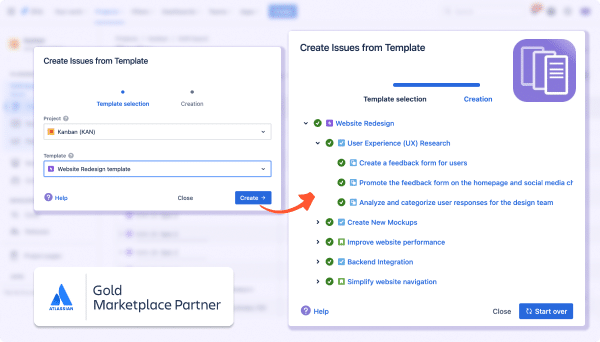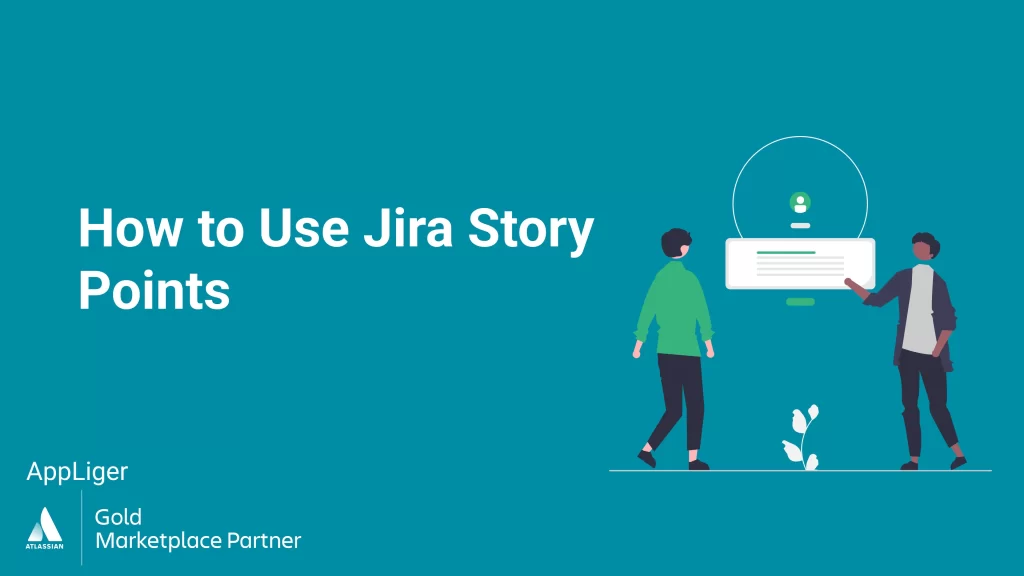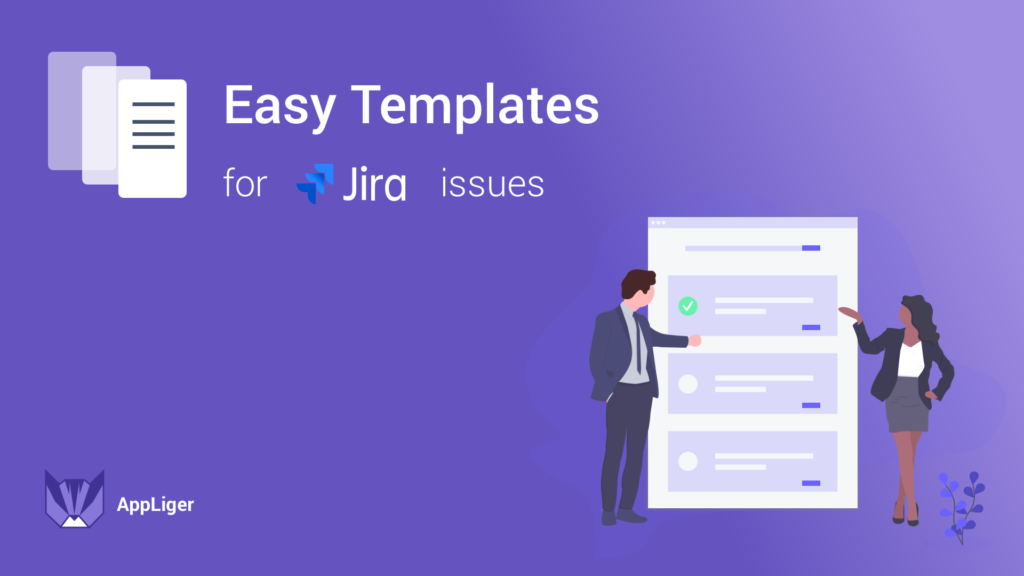For Agile teams, accurately estimating and tracking work is crucial to delivering value efficiently. Story points have emerged as a preferred technique for quantifying the effort required to complete user stories in Jira. With built-in Jira story points, your team can size user stories during grooming sessions, track capacity versus demand, visualize scope and progress through burndown charts, and pace work to hit targets.
Story points enable measuring development team velocity, improving estimation accuracy, balancing workloads, and keeping stakeholders informed. But how exactly should your team leverage story points to size backlogs, forecast roadmaps, and reliably meet sprint goals?
This comprehensive 2024 guide will explore what story points are and why they are useful, popular techniques for assigning story points in Jira, relative estimation best practices, and much more.
By understanding how to use story points in Jira for your needs and estimate Jira tasks accordingly, your team can confidently quantify ambiguity, streamline planning processes, deliver more predictable outcomes, and continuously improve.
What are the story points in Jira?
Story points are an abstract metric used by Agile teams to estimate the relative complexity and effort required to implement user stories and features tracked in Jira. They provide a subjective unit of measure for sizing stories independent of time.
Instead of hours or days, each story is assigned points representing the overall workload involved — from planning and design to coding, testing, documentation, etc.
The point scale is arbitrary but many teams use the Fibonacci sequence (1, 2, 3, 5, 8, 13, etc.) or power of two (1, 2, 4, 8, 16 etc.). The simplest stories get 1 point while larger, more complex ones get assigned more points to indicate greater effort.
Through discussion and consensus, the team determines the points during backlog grooming and sprint planning. Over iterations, the team’s velocity (sum of points completed per sprint) emerges, enabling forecasting of how much work can be delivered in future sprints.
Jira story points power effective estimation, informed planning, measurable progress tracking, and streamlined release management. By quantifying effort and complexity, they help teams focus on completing the most valuable work.

Boost your teams’ efficiency
Maximize your team’s productivity by easily duplicating your epics, tasks and stories with “Easy Issue Templates for Jira Issues”
How are story points calculated in Jira?
During backlog refinement or planning sessions, the Agile team collectively assigns story points based on consensus, reflecting their subjective assessments. To determine the points for a user story, the team holistically considers the estimated effort, complexity, unknown factors, and overall workload required to complete the implementation based on the story criteria and scope. They leverage past experience implementing similar stories to inform point values, estimating relative to stories already assigned points.
Several techniques are used like comparative sizing, affinity mapping, and planning poker. The goal is consistency across stories. Though abstract, some guidelines indicate a 1-point story should be implementable within a day or two.
The Fibonacci scale (1,2,3,5,8,13..) reflects exponential effort growth for larger point stories. The final agreed points get logged in Jira for each story. Over iterations, velocity emerges, allowing forecasting. The focus of story points is not the precise calculations but rather the insightful discussions that help the team determine the scope, tasks, and effort required to deliver maximum value.
Planning poker
Planning poker is a popular consensus-based estimation technique used by Agile teams to collectively assign story points in Jira during backlog grooming or sprint planning meetings.
Team members discuss the user story and then each independently selects a story point value from a deck of cards labeled with numbers from the team’s point scale. Once everyone has silently made an initial estimate selection, all cards are revealed simultaneously and differences are discussed to arrive at a final agreed estimate.
The steps are:
- The product owner or customer reads the story description and details. The team can clarify requirements but cannot discuss points yet.
- Based on effort, complexity, unknowns, and other factors, each team member privately selects a point card representing their estimate.
- Cards are then revealed at the count of three. All initial estimates are visible.
- If estimates differ significantly, the high and low estimators explain their reasoning. Others can provide perspective.
- The discussion continues in subsequent rounds with team members selecting new estimates if desired until consensus is achieved.
- The agreed final estimate is logged as the story point value in Jira.
The independent, silent selection mitigates bias towards any one opinion. The open discussion provides different viewpoints. Planning poker improves estimation accuracy through collective ownership of the final story points rather than just one expert view.
The open-minded debate leads to shared understanding of the story and its scope while building the team’s overall estimation skills. Multiple rounds enable re-assessment based on new insights from the dialogue. The result is calibrated, high-quality story points powering effective planning, forecasting, and delivery management.
You can utilize planning poker for assigning story points in Jira by using an app that integrates with the Jira platform and allows teams to estimate their work in a fun and interactive way.
Fibonacci sequence
The Fibonacci sequence is a powerful tool for Agile teams looking to size user stories with story points in Jira. It is a series of numbers starting with 0 and 1, where each subsequent number is the sum of the previous two (0, 1, 1, 2, 3, 5, 8, 13, 21, etc). Using the Fibonacci sequence as the point scale for stories provides several key advantages:
- Growth reflects reality — Each increase in the Fibonacci sequence represents exponentially greater effort. In development, increased scope does not scale linearly. The Fibonacci curve matches this.
- Allows uncertainty — Higher Fibonacci numbers have wider variance, reflecting the greater unknowns and complexity inherent in larger stories.
- Enables refinement — Fibonacci Jira story points provide more granularity for discussion and discerning scope differences between a 5, 8, or 13-point story.
- Avoids false precision — Large Fibonacci point values indicate the inherent ambiguity in big stories rather than falsely implying precision.
- Drives collaboration — The larger jumps between Fibonacci points necessitate greater debate to determine differences in the level of effort.
- Scales up — The Fibonacci sequence provides ample range for small (1-3 pts) to extra large (50+ pts) stories.
During sprint planning, teams leverage the Fibonacci scale to estimate Jira story points based on comparative effort and complexity. Over multiple iterations, velocity emerges, improving forecasting accuracy.
While not mandatory, the intuitive Fibonacci sequence matches the cadence of Agile development, enabling effective story point estimation and informed planning. For Jira teams using points, the Fibonacci scale is easy to adopt and provides a proven framework for sizing and tracking work.
Jira story points and relative estimation best practices
When leveraging story points for Agile estimation in Jira, following key best practices can improve sizing consistency, quality of discussion, and overall accuracy. Some recommendations:
- Size stories relatively — Points should represent effort relative to each other rather than fixed time units. Focus more on the comparison between stories than the raw point values.
- Involve all team members — The collective knowledge of the full cross-functional team provides a holistic perspective for balanced story sizing.
- Use a common scale — Consistently apply the same point scale (e.g. planning poker or Fibonacci) across sprints for reliable velocity tracking.
- Empower product owners — Ensure they can speak to requirements, dependencies, and risks to inform team estimation.
- Silent vote first — Techniques like planning poker enable independent opinions before groupthink sets in.
- Discuss differences — Understanding variances in estimates leads to shared understanding of scope and effort.
- Re-estimate if needed — Teams can refine initial estimates through healthy re-discussion when new insights emerge.
- Estimate conservatively — Account for unexpected issues that commonly arise during implementation.
- Stick to estimates — Avoid revising point values later to maintain the integrity of velocity.
By adopting these story-pointing best practices for relative estimation in Jira, teams establish a collaborative, consistent, and adaptive approach to sizing work. Consistency builds trust in estimates over time while discussion and flexibility improve accuracy. Estimates grounded in reality through lived team experiences coupled with strong product owner collaboration are key to delivering predictable outcomes sprint after sprint.
Summary
For Agile teams, story points are a game-changing option for approximating and tracking efforts in Jira. When leveraged effectively, they enable data-driven forecasting, informed sprint planning, measurable team velocity, and continuous improvement of the workflow.
By adopting the guidelines in this comprehensive guide, you can unlock the full power of story points — from establishing a consistent scale to assigning dialed-in point values through collaborative estimation techniques. Maintain discipline in tracking points separately from time estimates, monitoring velocity over iterations, and sticking to defined story scopes.
With diligent story point usage, your team will gain the ability to size backlogs with increased accuracy, predict capacity, identify bottlenecks, and reliably hit development targets. Story points help cut through ambiguity, drive alignment, illuminate progress, and keep everyone focused on delivering maximum value.
The insights revealed will undoubtedly propel your team towards heightened agility, productivity, and stakeholder satisfaction. Now equipped with everything needed to succeed, it is time to put these story-pointing practices into play and hit your goals!


